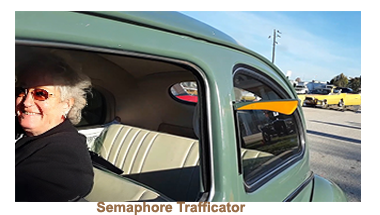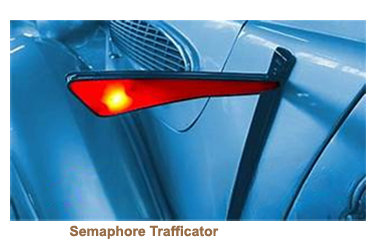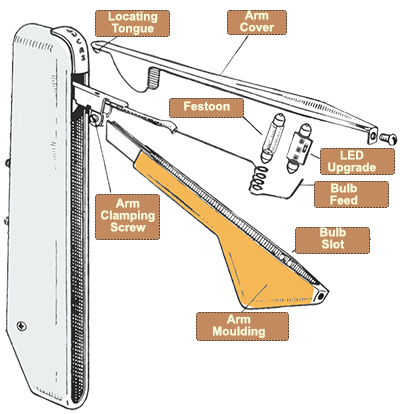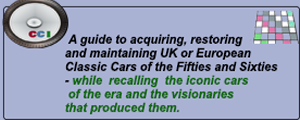
There is little argument that UK and European classic cars that emerged in the late Forties up to the mid Fifties, had more character than those that followed, despite their undisputed and many technical deficiencies.
Externally these cars had a shape and design that stood up for times gone by when drivers were more polite and prepared to let other road users know their intentions of when or where they were going to slow down or make a turn. It was all done mostly by hand signals, Signals that even figured in the UK Highway Code!!!
 The legal need to signal intentions must have been a real burden for UK and European drivers, especially in the cold winter months, as the driver window had to remain open most of the time, so that the signalling procedures could be followed.
The legal need to signal intentions must have been a real burden for UK and European drivers, especially in the cold winter months, as the driver window had to remain open most of the time, so that the signalling procedures could be followed.
 Forward thinking, German auto giant Volkswagen began to toy with the concept of fitting their Beetle with a device known as a pop-up trafficator (semaphore indicators-to give them their proper title) and began to fit them on some but not all Volkswagens from the mid Thirties onwards.
Forward thinking, German auto giant Volkswagen began to toy with the concept of fitting their Beetle with a device known as a pop-up trafficator (semaphore indicators-to give them their proper title) and began to fit them on some but not all Volkswagens from the mid Thirties onwards.
Regarded as a luxury for the rich and privileged, fitting semaphore trafficators, supplied by German accessory giant Bosch, began to become common high-end UK and European cars, such as Morris, Austin, Riley, Triumph and Humber, as well as on continental marques like Mercedes-Benz and Opel.
Semaphore indicators were typically mounted in the B-pillar (on saloons) or just behind the doors and were powered electrically to flip out when the driver operated a switch. The units often contained a small amber lens with a bulb inside, making them visible in low light.
 By the Fifties trafficators had become the standard method of indicating turns in both the UK and much of Western Europe.
By the Fifties trafficators had become the standard method of indicating turns in both the UK and much of Western Europe.
Smaller mass-market compacts such as the Morris Minor and Volkswagen Beetle still came fitted with trafficators up till the early Sixties, until new legislation demanded that manufacturers started fitting flashing indicators for safety.
 Even though the benefits of indicators are obvious, for those who want to preserve the authenticity of their vehicle
Even though the benefits of indicators are obvious, for those who want to preserve the authenticity of their vehicle
They are an authentic part of how these cars communicated on the road, in addition to their charming period theatre. Maintaining trafficators not only preserves the car's originality but also prevents bodywork from being cut for later flashers.
The good news for the purist is that using trafficators, in the UK or in Western Europe, is not illegal, as long as they have been fitted as standard l on older / historic vehicles.
 The other piece of good news is that Semaphore Trafficators are surprisingly easy to restore and maintain and there is a widespread network of companies providing support for parts: as well as specialised manuals on how to clean, rewire, and adjust existing or replacement arms, lenses, coils. For most popular models there are even entire units are available.
Wiring diagrams are common in marque communities and correct-pattern switches for most well-known models are still available.
The other piece of good news is that Semaphore Trafficators are surprisingly easy to restore and maintain and there is a widespread network of companies providing support for parts: as well as specialised manuals on how to clean, rewire, and adjust existing or replacement arms, lenses, coils. For most popular models there are even entire units are available.
Wiring diagrams are common in marque communities and correct-pattern switches for most well-known models are still available.
 Another potentially very useful source of information for restorers who are keen to see their semaphore trafficators functioning fully are owners’ clubs, preferably relating to the particular model being restored or maintained.
Another potentially very useful source of information for restorers who are keen to see their semaphore trafficators functioning fully are owners’ clubs, preferably relating to the particular model being restored or maintained.
Although there may be a few headaches along the way, semaphore trafficators properly restored make for a talking point as well as fully functional piece of mid-century signalling theatre that maintains the character, accuracy and function ability on the contemporary roadways of today.
ae4

